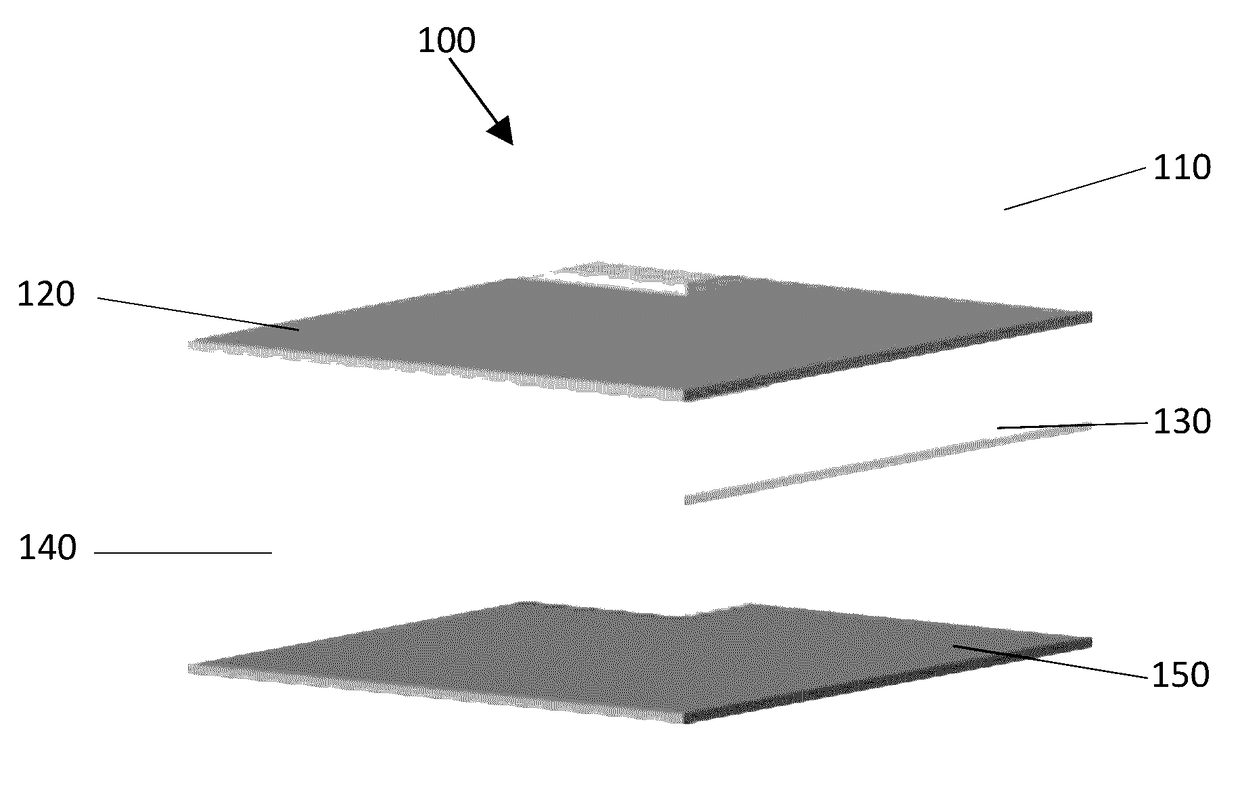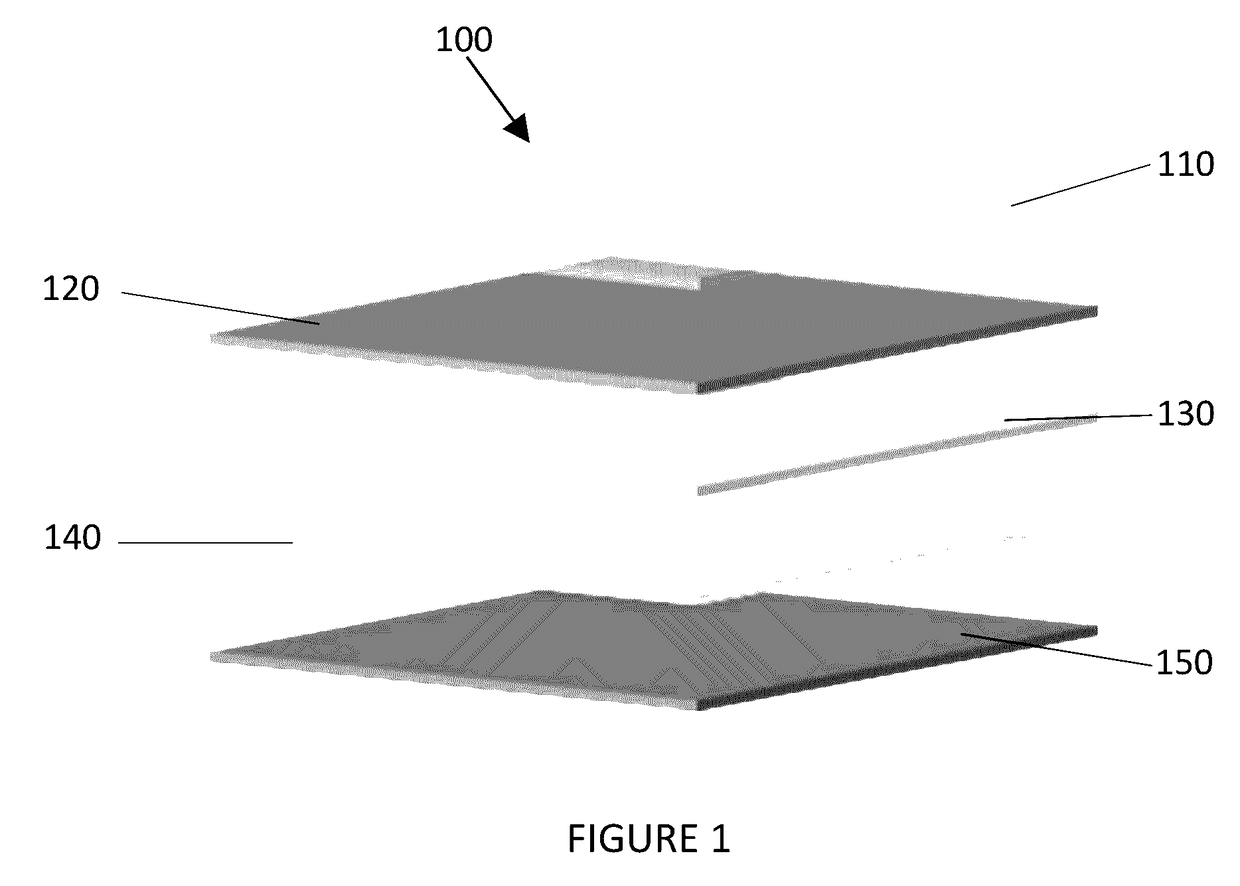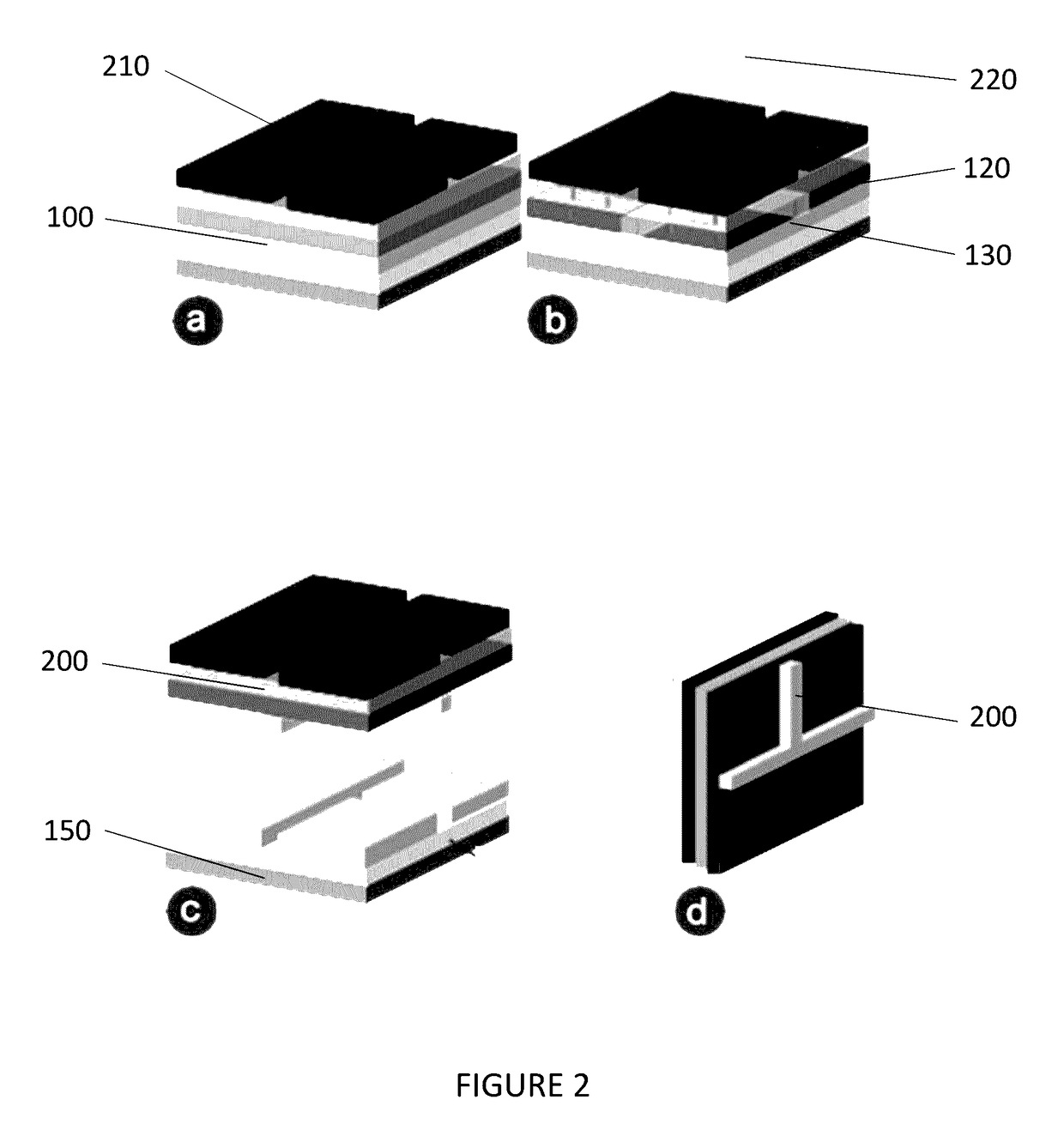Printable Films for Printed Circuit Boards and Processes for Making Same
a technology of printed circuit boards and printed circuit boards, applied in the direction of printed circuit parts, printed circuit dielectrics, transparent dielectrics, etc., can solve the problems of requiring significant equipment and potentially hazardous materials, requiring days or weeks to complete, and presently cumbersome construction of physical electronics prototypes
- Summary
- Abstract
- Description
- Claims
- Application Information
AI Technical Summary
Benefits of technology
Problems solved by technology
Method used
Image
Examples
example 1
Shield
[0091]To demonstrate the quick prototyping use of PCB film, a simple LED bar graph shield for the Arduino Uno™ may be built. Due to the simplicity and rapidity of using PCB film 100, such ad hoc circuits may be tested quickly and then cut into a variety of shapes for later use.
[0092]FIGS. 3A and 3B show the Arduino™ shield 300. As shown in FIG. 3A, the attachment points 310 for the Arduino™ pin-outs are on the right side of the PCB, and the leads and mount points 320 for each LED in the array are in the center, along with the leads and mount points for a single resistor beneath the array. FIG. 3B shows the working PCB 300, where the Arduino Uno 330™ is controlling the LED array 340. In this example, the PCB was printed in several seconds, plus an additional two minutes to cure. Components were then attached using a stencil, as described above. Also, while the PCB is generally flexible, this device is better provided with rigidity. To this end, the PCB was affixed to a rigid su...
example 2
mb
[0093]As shown in FIGS. 4A and 4B, this device 400 indicates when a plant needs to be watered. The circuit consists of an Attiny85™ microcontroller 410 that repeatedly measures the resistance of the soil, triggering a red LED 420 whenever the moisture falls below a certain threshold set using the onboard potentiometer 430. For assembly, the components have been affixed to the PCB using conductive epoxy as shown in FIG. 4A, but without the use of a mask, after making holes in the PCB at the right places, the components are inserted through and the conductive epoxy is applied. Finally, scissors are used to cut the PCB to the desired shape.
example 3
Shortcut Pad
[0094]As shown in FIGS. 5A and 5B, the flexibility of PCB film 100 may be leveraged to create objects with interesting shapes, using the PCB film 100 to create componentry, rather than simply the traditional elements of a PCB. In this case, a simple user interface device: a shortcut pad 500 that triggers various shortcuts in OSX. An Arduino Pro Micro™510 has been combined with a simple capacitive sensing technique to create a touchpad 520. The circuit triggers a keyboard command through the USB whenever the touchpad 520 on the PCB is touched. The physical substrate was created using a laser-cut acrylic that was reshaped with a heat-gun, onto which the PCB was mounted. As shown in FIG. 5B, the PCB is then adhered to a bent acrylic mounting.
[0095]Naturally, traditional buttons could have been mounted onto the PCB if desired. However, the use of the PCB film 100 to create the input pad itself demonstrates the sort of flexible prototyping that the PCB film 100 affords. Also,...
PUM
 Login to View More
Login to View More Abstract
Description
Claims
Application Information
 Login to View More
Login to View More - R&D
- Intellectual Property
- Life Sciences
- Materials
- Tech Scout
- Unparalleled Data Quality
- Higher Quality Content
- 60% Fewer Hallucinations
Browse by: Latest US Patents, China's latest patents, Technical Efficacy Thesaurus, Application Domain, Technology Topic, Popular Technical Reports.
© 2025 PatSnap. All rights reserved.Legal|Privacy policy|Modern Slavery Act Transparency Statement|Sitemap|About US| Contact US: help@patsnap.com



